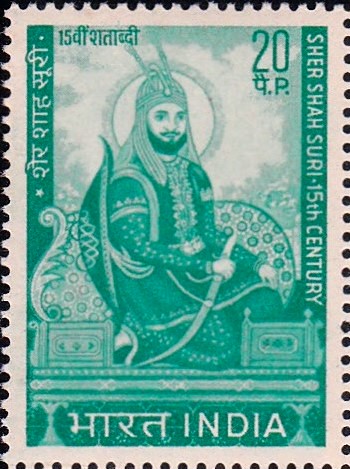
Sher Shah Suri
A commemorative postage stamp on the 425th Death Anniversary of Padishah Sher Shah Suri, founder of Sur Empire in North India :
Issued on May 22, 1970
Issued for : Sher Shah Suri’s reign gave new vigour and trend to the Indian Postal system. The Indian Posts and Telegraphs Department was happy to issue a special postage stamp honouring the memory of this great and popular ruler and one of the early pioneers of a nationwide postal service.
Description of Design : The design of the stamp is vertical and depicts a portrait of Sher Shah Suri.
Type : Block of 4 Stamps, Mint Condition
Colour : Jade Green
Denomination : 20 Paise
Overall Size : 3.91 x 2.90 cms.
Printing Size : 3.56 x 2.54 cms.
Perforation : 13 x 13
Watermark : Printed on unwater–marked adhesive stamp paper
Number printed : 30,00,000
Number per issue sheet : 35
Printing Process : Photogravure
Designed and Printed at : India Security Press
Name : Sher Shah Suri
Born on 1486 at Sasaram, Bihar, India
Died on May 22, 1545 at Kalinjar Fort, Bundelkhand, Uttar Pradesh, India
About :
- Sher Shah Suri was one of the few great and benevolent rulers India has seen. His grandfather, Ibrahim Khan Suri and his father Hasan Khan Suri migrated from Afghanistan to India during the reign of Sultan Bahlol Lodi (1451-1489). The exact date and place of birth of Sher Shah Suri is not known. He is believed to have been born at Parganah of Bajwarah about the year 1472 or at Narnaul or Hissar Firoza round about 1486, Farid Khan Suri, as he was called in his younger days lived at Sahasram (Modern Sasaram) in the Shahabad District in Bihar) which was the headquarters of his father’s ‘jagir‘ consisting of the parganas of Sahasram and Khwaspur-Tanda.
- Young Farid Khan Suri was sent to Jaunpur to prosecute his studies. Being naturally intelligent and talented, he acquired a good knowledge of both Persian and Arabic languages and literature, and learnt by heart such works as the Gulistan, Bostan and Sikandar-namah.
- When he came to power, he celebrated his coronation in the city of Gaur (Bengal) in 1538 and declared his intention and determination to drive out the Mughals and roll back history. His sagacious politico-military leadership led him finally to the conquest of Delhi. With a grim determination and steadfastness of purpose, he finally defeated the Mughal Emperor, Humayun in 1540 at the battle of the Ganges of Bilgram better known as the Battle of Kanauj. Following this victory, he occupied Delhi and shifted his administrative headquarters there.
- Sher Shah Suri was an outstanding administrator. His tenure was very short barely extending over five years, But in this short period he gave evidence of a tolerant and dynamic personality who introduced several beneficial administrative reforms for his people including revenue reform, reform of the currency and tariff system, reorganisation of the Central and Provincial Governments, strengthening of the postal system and reorganisation of the Army.
- Sher Shah evinced great interest and care in the welfare of the neglected and exploited peasantry. Under his royal instructions, is revenue officers showed a tolerant and liberal outlook at the time of assessment of revenue.
- He introduced the new silver rupee-coin ‘Rupiya‘ based on a ratio of 40 copper-coin pieces (paisa) per rupee. On his earliest Bengal coins, he inscribed his name as ‘Sri Ser Sahi‘ (Shri Sher Shah) in both Devnagari and Persian scripts.
- Sher Shah was a great road-builder. The longest road build on his orders known as the Grand Trunk Road (Shahrah-i-Azim), (now known as National Highway-2) ran from Sonargaon in Bengal through Agra, Delhi and Lahore to the Indus. The other important roads build by him are from Agra to Burhanpur and on up to Mandu, from Agra to Jodhpur and Chitor, and from Lahore to Multan.
- It was during the reign of Sher Shah Suri that the foundation of a well-organised nation-wide postal system was laid. This was facilitated by the excellent improvement in means of communication between different parts of North India by the new trunk roads and the maintenance of a system of horse-posts, the security of which was ensured by a strong and efficient administration.
- Sher Shah Suri died on 22nd May, 1545 due injuries by the explosion of a gun-powder magazine during his successful Kalinjar expedition. His solemn and magnificent mausoleum stands at Sasaram in the Shahabad District of Bihar. At the time of his death, the territories under his rule extended from Bengal in the East to the Punjab in the North-West and as far as the Vindhya hills in the south and the Karakoram range in the north.



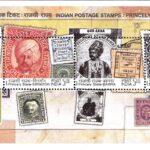
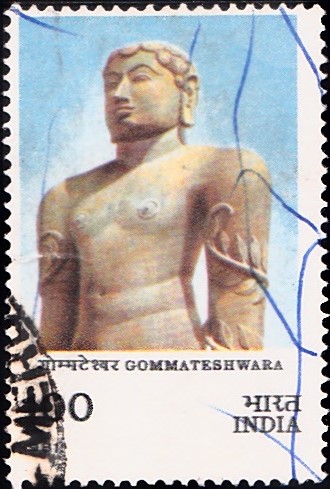
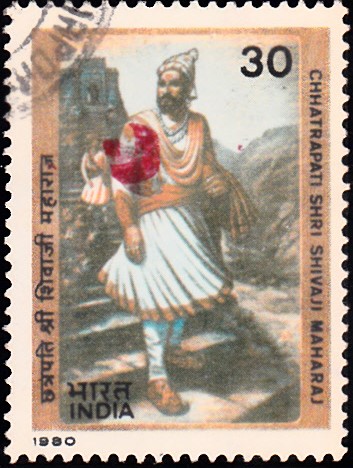
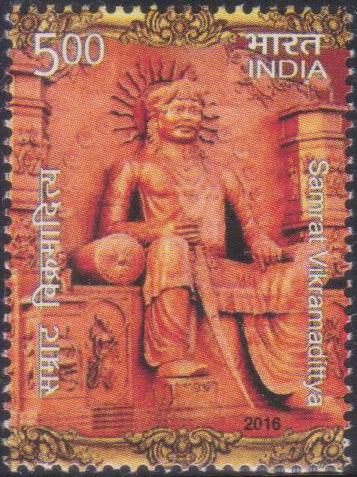
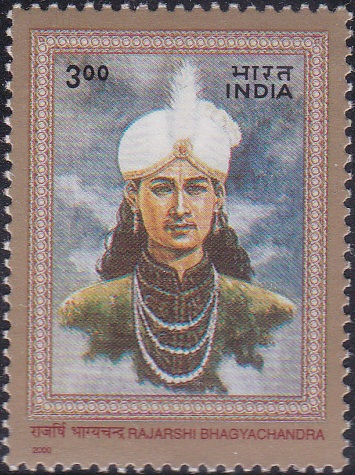
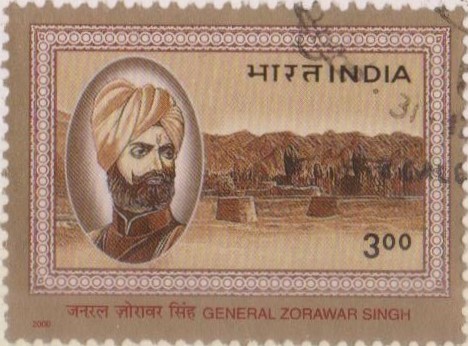
[…] the 16th century, Sher Shah Suri in his short rule of the South Asian sub-continent made an earnest effort to build roads. Of his […]
[…] have been the standards of value and exchange throughout the world for many centuries. In India, Emperor Sher Shah made the Rupee the standard currency within his domain and followed the ratio of exchange of one […]